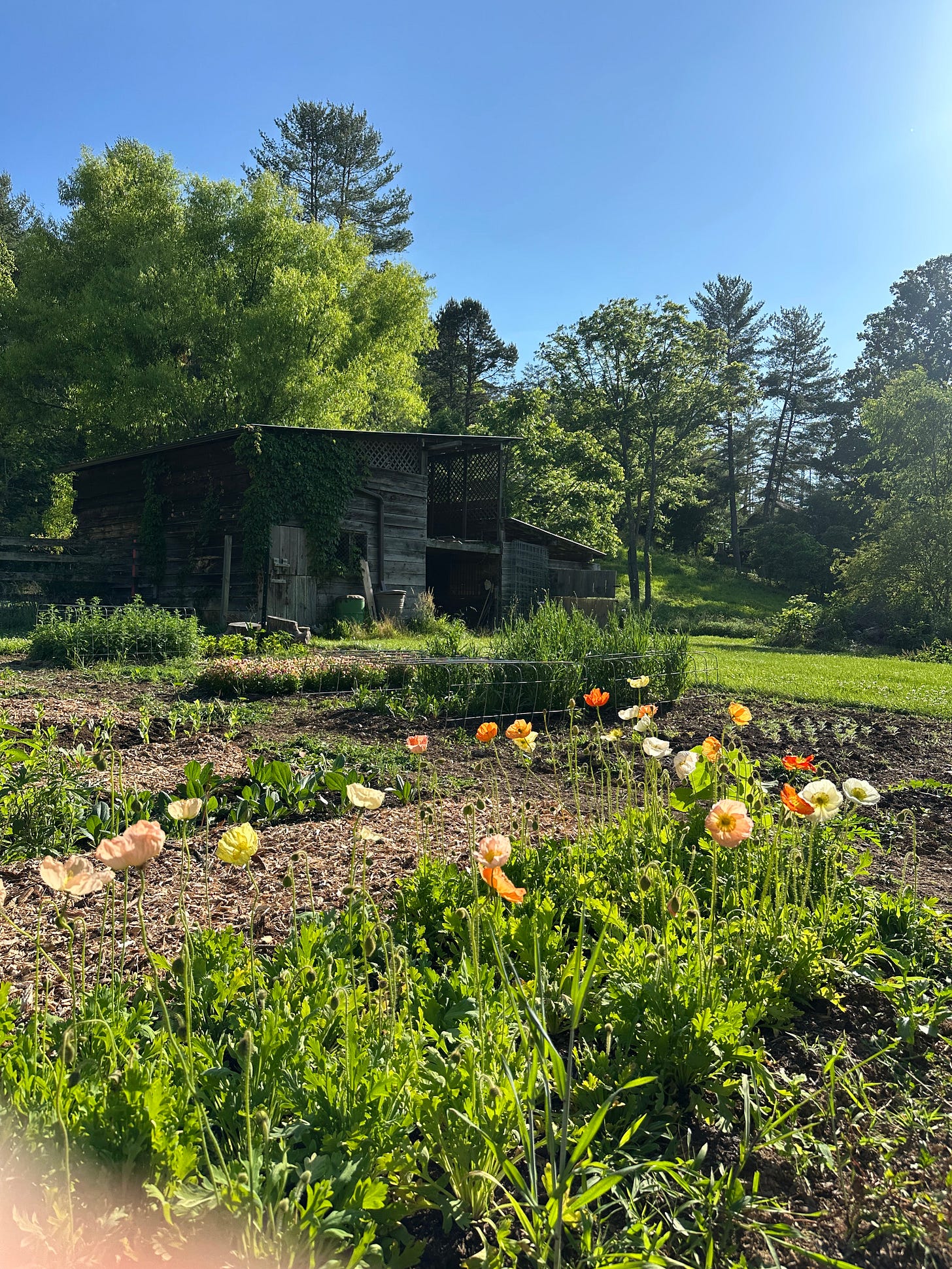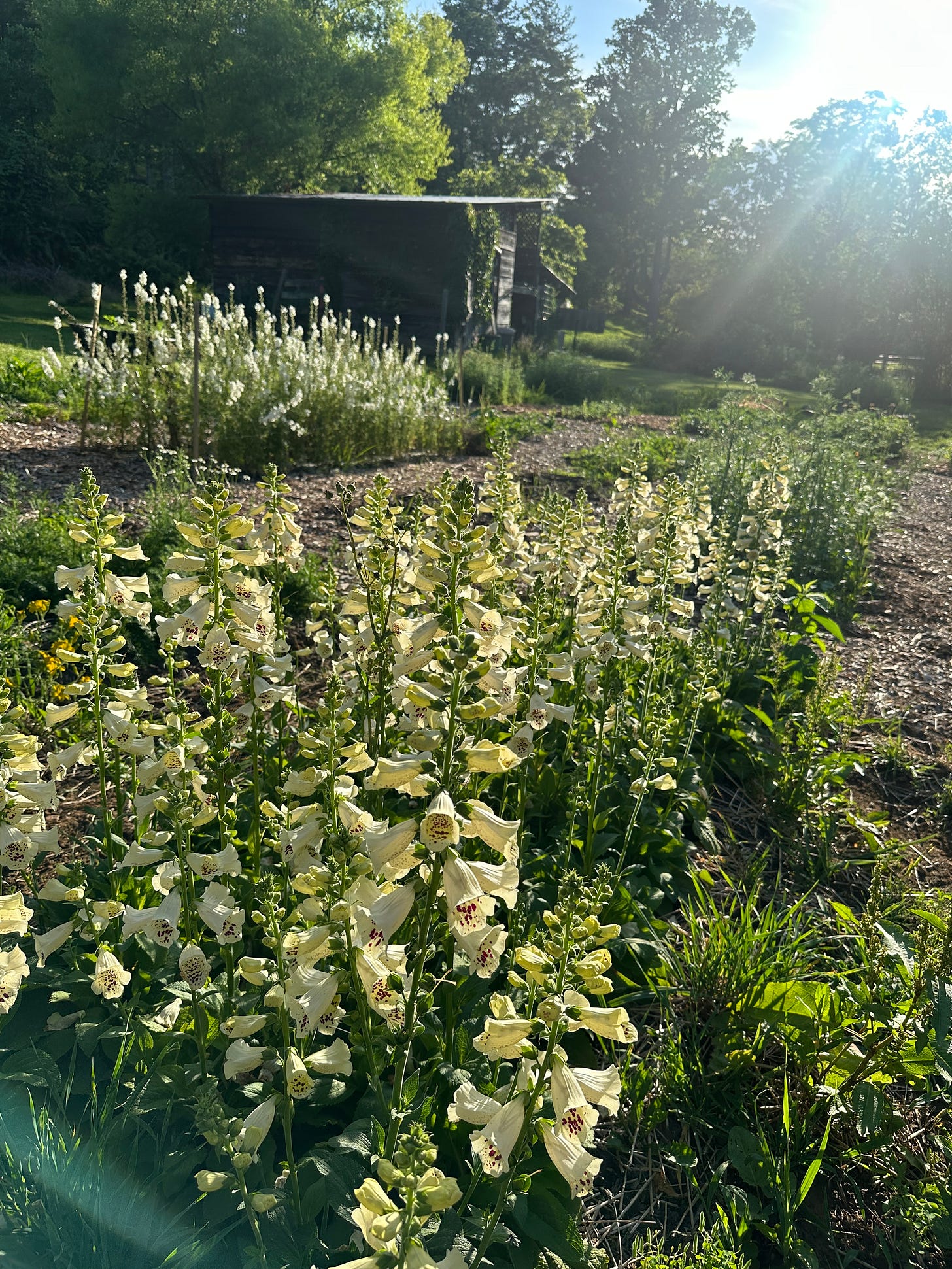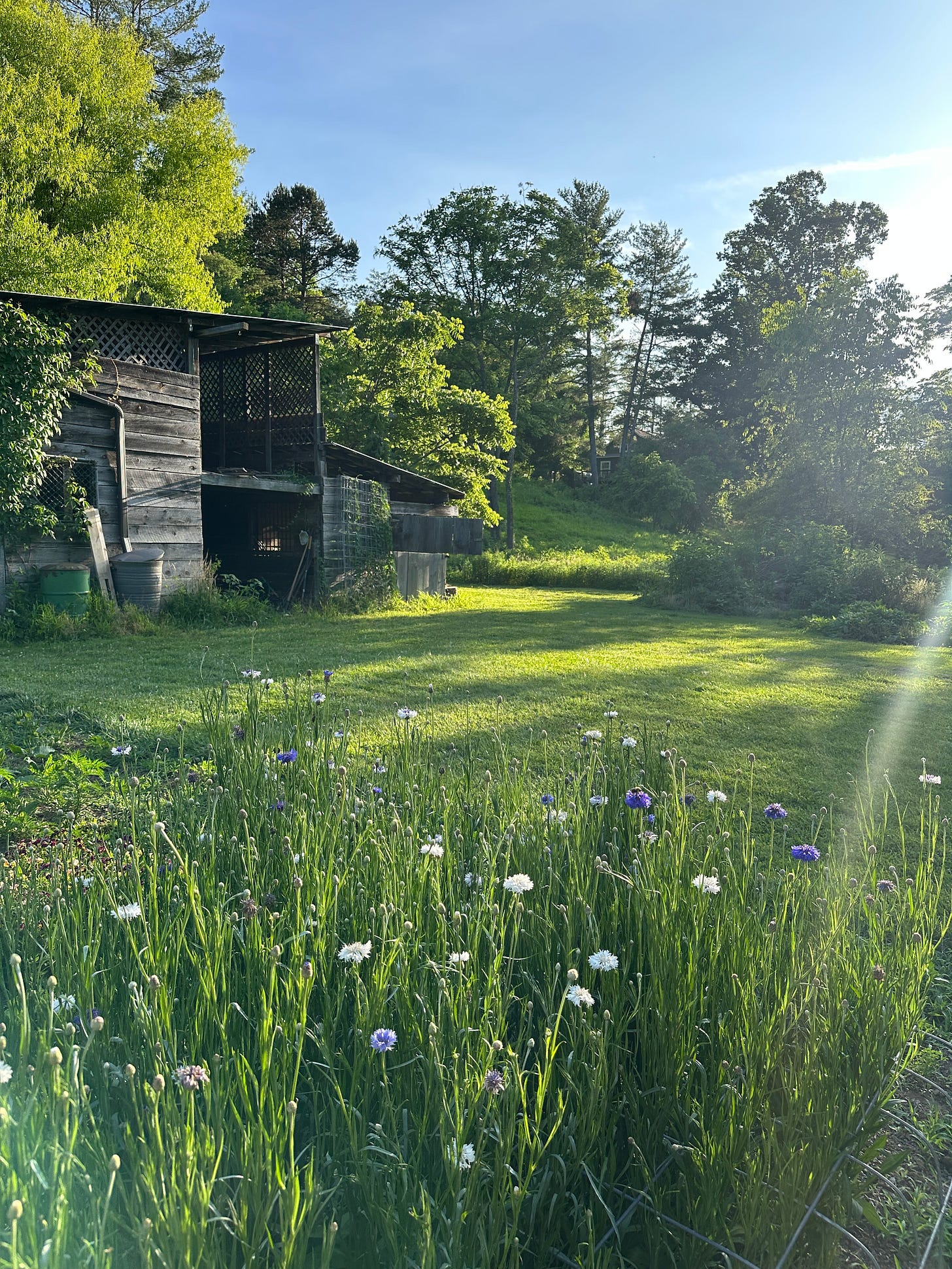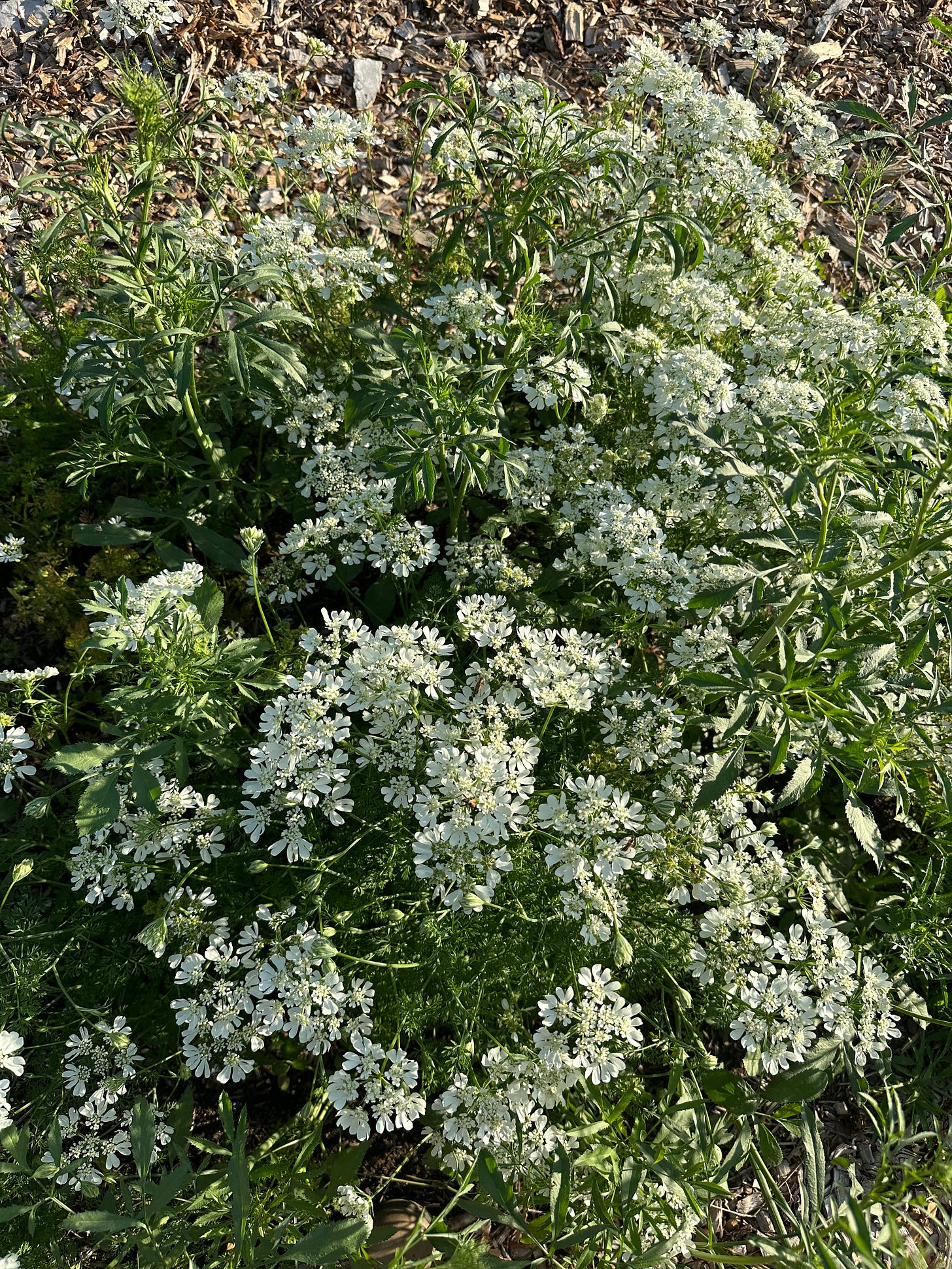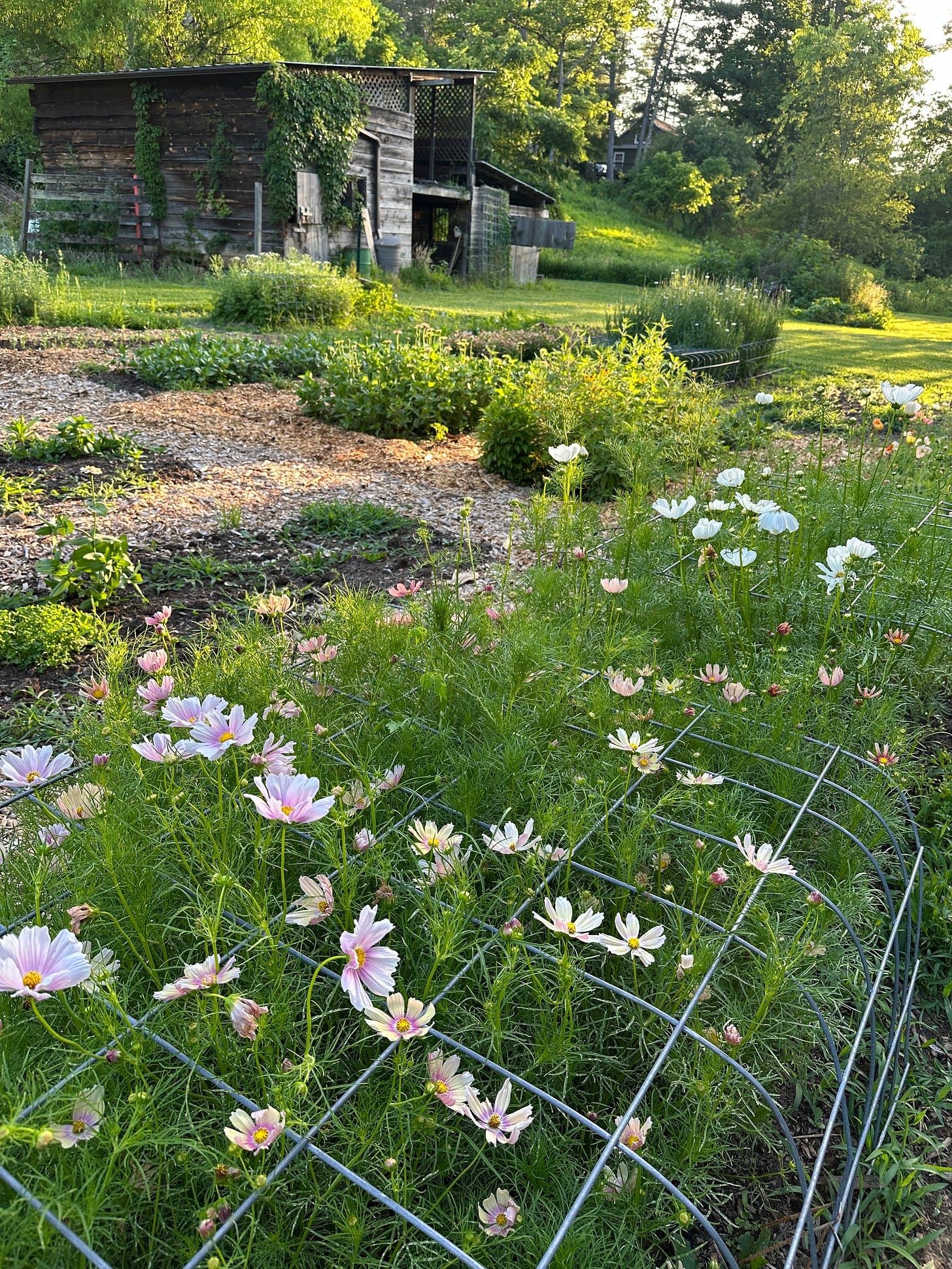A Gardening Year
Volume 6
June: Early-Summer: The garden has hit its stride. Cool season flowers have peaked; some beginning to fade, others long gone. The first flush of warm season blooms are just now appearing. Zinnias and cosmos stretch taller each day. I’m harvesting more regularly now, often before breakfast. Successions are still in motion, and I’m caring for seedlings that will replace the faded beds soon. The days are long and full; early mornings, late dinners, golden atoms of light linger.
Dear reader,
This volume of A Gardening Year is about a week late. The truth is I’ve been holding back because of feeling like the farm is “behind” on where it should be at this time of the year. The paths are not all mulched. The flower beds are not perfectly pinched, staked, and weeded. Some beds are half-empty due to poor germination or pests. Spring is newness, anticipation, visionary. Suddenly it’s summer, and the rose-tinted glasses are in my back pocket, forgotten. The heat and humidity settle in, and the neat angles and corners start to merge into organic matter.
Despite feeling like the outwardness and energy I should have to match the garden, I’ve been drawing inward, wanting to live in the sensorial realm, to take things in.
Right now, the sentence in Maria Popova’s Figuring, has naturalized in my mind:
“However, divided we may feel with ourselves. It is the sum total of our warring fractions that make us who we are: fragmentary, but invisible.”
Popova was describing how our inner emotional complexities, with all of our contradictions and struggles, don’t diminish us, but instead shape us. This inner conflict isn’t a weakness, but often the very crucible through which transformation occurs.
The garden is where this lesson plays out again and again. Where things fragment, fall apart, break down only to become something else. A garden is full of contradictions. Compost is rot and potential. A half-finished bed is still a gesture toward life.
Field Notes, June.
It’s been a cool and wet June, a lucky thing for a garden in the South, where cool-loving flowers like Icelandic poppies and violas are usually battered by summer heat by midsummer. I’ve been able to harvest handfuls throughout the month. And despite the fact that both poppies and pansies are finicky to start, their long bloom window and steady productivity earned them a place on next season’s sowing calendar.
Foxgloves started in January have bloomed en masse, joined by airy fillers like Orlaya and bachelor buttons.
One of the varieties I was curious to grow this year was salpiglossis. I was inspired by one of my favorite growers, Hannah Melde of Golden Heron in California, and decided to dedicate a small patch to it. California has a much milder climate than here, and since salpiglossis resents the heat, I wasn’t sure how it would do. They’ve just started blooming, and I’m curious to see how long they’ll last.
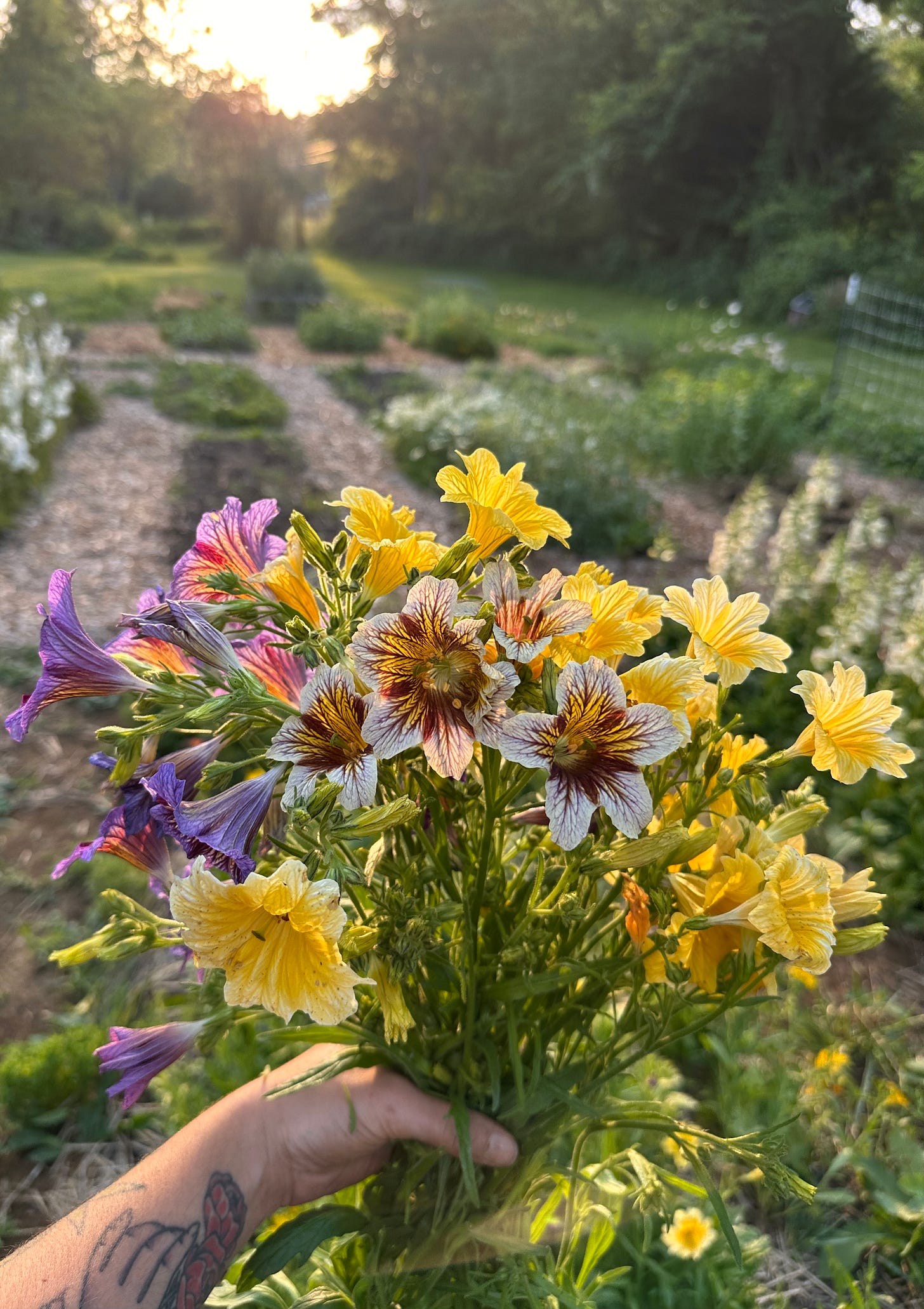
One of the struggles I had this month was setting up the irrigation. There’s no running water on the farm, just a small creek nearby. My first growing season, I did everything by the book, including irrigation, which was no small feat without a water source. It took a lot of piecing together: a pump, a solar panel, and hundreds of feet of plastic drip tape stretched everywhere.
The system technically worked, but only sometimes. There were long stretches when it didn’t. Issues with pressure, clogged tape, a loose end somewhere. I had to hand water more than I expected. But one of the things I noticed was that the section of the field that wasn’t irrigated, because it’s on too much of a slope, did just as well as the rest. Maybe even better.
My hunch is that because our soil is decent and has some clay in it, it holds moisture really well. Asheville is technically a temperate rainforest within the Southern Appalachian Mountains, one of the wettest regions in the eastern U.S. There’s rarely a shortage of rain in a rainforest.
After tripping over plastic drip tape for the umpteenth time, I finally gave up and wrestled the brittle, sun-baked plastic mass into the back of the horse barn.
We still have the solar panel and pump set up. It fills a 300-gallon tote, and I plan to hook up a hose to it when we go through longer dry spells. That should be enough.
One of the biggest things I’ve been learning, or maybe unlearning, is that so much of conventional farming advice assumes a kind of one-size-fits-all standard. You must have irrigation. You must use plastic weed barrier that eventually frays into long ribbons of trash. I could write a whole piece on how much I hate that stuff (sorry, floret). But most of farming is just paying attention. It’s learning your place. Listening to what it needs. Responding to the patterns that are already there. Not trying to control everything or optimize it into submission.
Even with all the wrestling and second-guessing, the garden is generous. The first flush of heat-loving annuals have bloomed, even if not exactly as planned.
One of my main goals this season was to source all the ingredients for a full array bouquet from the farm, and this week, I was able to do so for a handful of bouquets, a small but meaningful win.
I started this letter feeling behind, unsure if I should even send it. But the farm keeps showing me: it doesn’t ask for perfection. It just asks that I stay in relationship with it.
It reminds me that even when I feel behind or undone, something is always ripening beneath the surface. That fragmentation is often where growth begins.
Love,
Rowen
Here’s a list to focus on the most important things to do in the garden right now.






